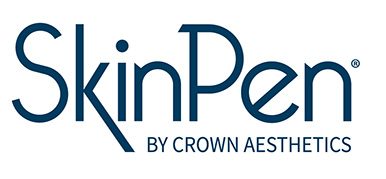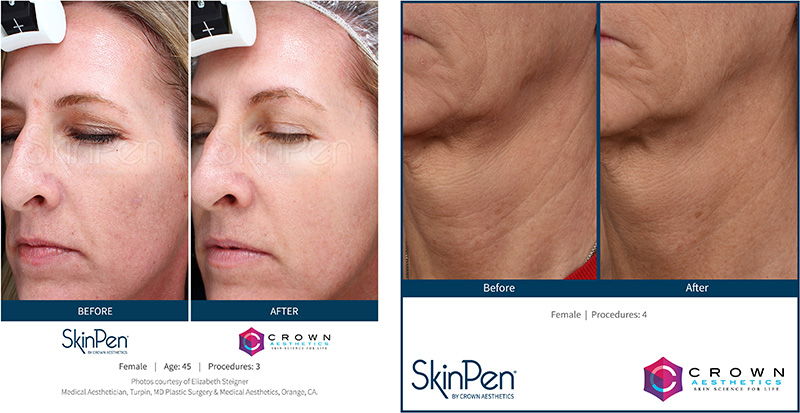

What is Microneedling?
Microneedling is a procedure in which a device or roller with fine needles is used to make tiny piercings in the skin. This stimulates a healing process with the production of collagen that helps keep the skin elastic and hydrated giving it a youthful appearance. Our clinic utilizes SkinPen device for this procedure.
What is SkinPen?
SkinPen is an FDA-approved device to perform microneedling to rejuvenate the skin of the face and neck. More information can be found at https://skinpen.com/.
Microneedling With PRP
To enhance results your doctor may combine microneedling with platelet-rich plasma (PRP) also known as PRP facial. PRP is derived from a sample of your blood which is processed to concentrate platelets. PRP also contains proteins, growth factors and cytokines that help promote tissue healing and skin renewal. For more information, please refer to the Facial section of PRP services
Indications for Microneedling
Microneedling helps remove or lighten marks and blemishes on the skin and can be used to treat:
- Acne scars
- Surgical scars
- Aging skin
- Wrinkles
- Sun-damaged skin
- Uneven skin complexion or texture
- Areas of hyperpigmentation
- Large pores
Microneedling is generally avoided in cases of
- Pregnancy
- Active acne flare
- Infection in the face
- Certain skin conditions such as psoriasis or eczema
- History of easy scarring or bruising
- Blood disorders
Your doctor will discuss the safety of the procedure based on your condition
Benefits of Microneedling
Microneedling with the SkinPen has multiple benefits- It is safe for all skin colors
- Recovery is quick
- Scars heal very well
- Overall good results and patient satisfaction with 90% of patients recommending this procedure
Procedure
Your doctor will decide on a treatment plan based on your condition. The number of treatments can vary but most people experience good results with 3 treatments spaced out over 3 months. Further treatments may be necessary for significant scarring.
If PRP is used, your doctor will first obtain a sample of your blood so that PRP can be processed. The area to be treated is anesthetized with a topical numbing agent. SkinPen is then used to create tiny holes in the skin. This is followed by the application of PRP which enters the tiny holes and enhances collagen production and cell reproduction. The procedure takes about 30 minutes.
Your skin responds to the treatment in 3 phases:
Phase I: Inflammation phase: As the skin is pierced the immune process is triggered improving blood supply to the area and drawing cells necessary for repair and regeneration. The PRP application boosts this activity.
Phase II: Proliferation phase: In this phase, the tiny piercings heal with granulation tissue and proliferating blood vessels.
Phase III: Remodeling phase: Dermal tissue or “new skin” is then laid down replacing the healing tissue.
It usually takes a few weeks to show results which gradually improves as collagen production takes place.
Post-procedure Care
Microneedling with or without PRP has minimal recovery time. You may feel slightly sore and tender in the treated areas and certain regions may appear pink or red. Over-the-counter pain medications can help with any discomfort and control inflammation. Some people experience dry skin, itching, or peeling. Your doctor will recommend an aftercare regimen for the best recovery.
Risks and Complications
Microneedling generally has minimal risks and complications but you may sometimes experience:
- Infection
- Bruising
- Pain
- Swelling
- Fluid discharge
- Milia (small white bumps)
- An acne flare
See your doctor if the pain is severe. Most complications are temporary and clear in a few days.
